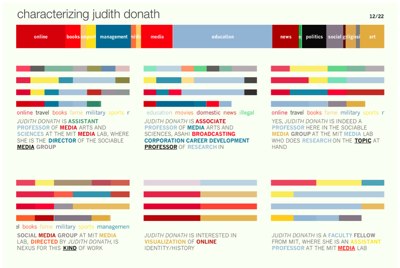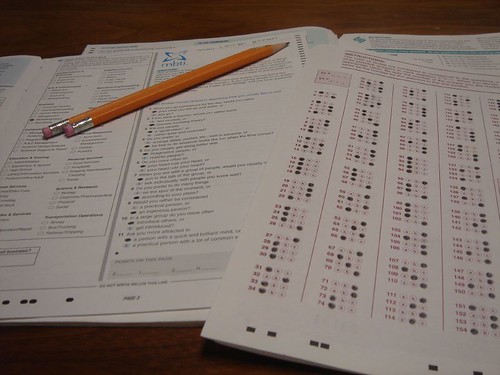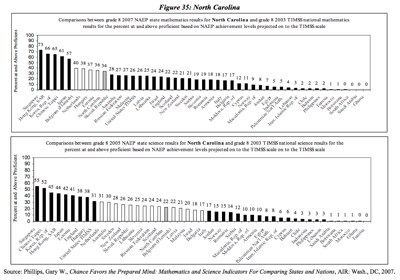
Flickr Photo by Noah Darnell Here
Browsing through some blogs the other day, I ran across this one (What are we Doing?) from Mike Meechin, a Florida social studies teacher. Meechin tells of a high school junior in his class, who asked a question, “about the pilgrims (U.S. History early 17th century) using the automobile.”
Now, as a former social studies teacher, I am disappointed that Meechin’s (or anyone’s) students seem to understand so little about geography and history. But I’m not surprised. There are two reasons for this generation’s lack of understanding about their world — in my opinion. First of all, we do not value this kind of knowledge ourselves. Ask most of your adult friends when the automobile was invented. Plus, I do not see how we can so emphasize the STEM subjects (Science, Technology, Engineering, and Mathematics) to the degree that we have, without devaluing, (in) our students eyes, history, geography, and sociology. Social science is one of several essential keys for enabling future prosperity. Yet, scanning through an education journal, while sitting on the tarmac, I ran across an article entitled, “Competing in the Global Economy,” subtitled, “Factors Impacting Science Achievement.” Don’t get me wrong, STEM is critical. But so too is understanding the social, cultural, and historic contexts of the world we are working and playing in.
The second reason gives me even more concern. I’ve often said that I consider myself lucky to have grown up during the golden age of Television. This new and compelling form of communication availed us the power to share ourselves, or worlds, and our stories in ways that had never been possible before. When taking my son to the University of North Texas a few years ago, to audition for their school of music, we took a drive through the country side. There, I was flabbergasted that he did not know what a long horn steer was. He gasped by the sight, and I immediately realized that he never watched Rawhide. I watched TV that, with the exception of Saturday mornings, was geared for a general population, across ages, that was experiencing this phenomena together.
My children have spent their time on Nickelodeon. Don’t get me wrong. I think that Nick has some wonderful and thoughtful programming. But it is still contrived to appeal to children by entertaining them on their terms. Their video games are similarly designed to entertain, and the culture of their social networking is almost entirely evolved out of what children want to do. This, too, is not bad. I have deep respect for what our children have made of today’s information environment. But they have missed so much, and I do not know how to fill this gap.
Because of how our children learn, I do not believe that we can teach it to them. I do not believe that we can or should expect them to learn history, geography, or sociology (or anything else for that mater) by telling them to, or worse yet, “Because it’s going to be on the test.” That worked for us, but I won’t for them.
What they learn well, they learn because it helps them. Knowledge and skills are tools for them, which they learn to use to accomplish goals. Their goals are to reach some level in the video game of the day, or to generate conversation through their social networking. To me, the question should be, “How do we infect these information ecosystems with the knowledge and skills that we know will be essential to their future.
Finally, and this is turning into a long blog because this is a two hour flight, I think that part of the problem is ours. How often do we, as educators, look at what we are teaching, and ask ourselves, “Is this really important?” As Meechin asks, “What are we doing?” How important is it for them to know that precisely where the invention of the automobile and early European settlement of North America fall in relation to each other on a timeline — well 300 years difference is a bit much to swallow.
I remember one instance, in my early days with computers in the classroom, where I asked this question. We were helping our students learn the states of the US, using flash cards. Each card included the name of the state, the geographic outline of the state, and its capital. I asked myself, why should students learn the shapes of the states. Of course it was an association thing to help students remember the states. But there were other things about the states that I thought it was important to learn, and using flash cards seemed an unnecessarily tedious way of doing it. So I wrote a game for our Radio Shack Model III computers.
The game placed a map of the U.S. on the screen — no small task for a TRS-80. Then the learner was informed of the state he was currently in, a commodoty to be delivered, and the state it was to be delivered to. Sitting by each computer was an almanac. Students had to find which state produced the commodoty, and then drive his truck to that state by typing in the name of each state to be driven through to reach the supplyer, spelling each state correctly. Then they drove to the target state. There was a counter running, so your payment for each trip depended on how fast you got there. In no time, the students were working without ever picking up the reference books.
It seemed that using the information as a means for achieving something, was a much better way of learning it, than simply memorizing from flash cards.
The bottom line of this ramble is that students armed with answers about science, technology, engineering, and math will not be able to compete or contribute to a global economy. It will be students who can can observe their environment, understand it, and inventively find ways to participate and contribute.






















